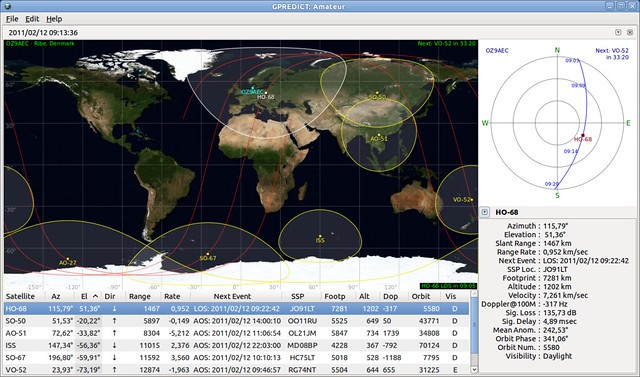Today I have spent some time trying the Funcube Dongle with Quisk SDR. The setup procedure was quite painless and the results very satisfactory: Using an Arrow II hand-held yagi connected directly to the FCD I could receive the HO-68 CW beacon with very good SNR.
For this experiment I was using Ubuntu Linux 10.10 64 bit.
By default quisk uses the default sound card as input device. To use the Funcube Dongle as input, first check its device number:
$ cat /proc/asound/cards
0 [ICH6 ]: ICH4 - Intel ICH6
Intel ICH6 with AD1981B at irq 21
1 [default ]: USB-Audio - FUNcube Dongle V1.0
Hanlincrest Ltd. FUNcube Dongle V1.0 at usb-0000:00:1d.3-2,
In ALSA language the funcube Dongle is hw:1 on this computer (the built-in Intel device is hw:0). Now create a copy of quisk_conf_model.py – call it quisk_fcd.py and edit the contents:
sample_rate = 96000 # ADC hardware sample rate in Hertz
name_of_sound_capt = "hw:1" # Name of soundcard capture hardware device.
name_of_sound_play = "default" # Use the same device for play back
channel_i = 0 # Soundcard index of in-phase channel: 0, 1, 2, ...
channel_q = 1 # Soundcard index of quadrature channel: 0, 1, 2, ...
Now we can start quisk:
$ ./quisk.py -c ./quisk_fcd.py
First thing I noticed was that the qthid application was crashing whenever I tried to use it together with quisk. This stopped happening after I updated the HID files as suggested by Pascal Hirsch in this message. I copied the latest version of hid-libusb.c and hidapi.h into the qthid folder and changed the hid002.pro file by appending:
linux-g++: INCLUDEPATH += /usr/include/libusb-1.0
Now I could use qthid and quisk at the same time. I have let them run for about an hour before HO-68 had AOS.
It was too cold to go outside so I stayed indoors and pointed the Arrow out through the window facing South. However, I could hear the CW beacon already though the walls before the satellite came to the South side. The signal was very strong during the peak, which was about 52° El, range 1400 km. According to the Amsat website, the HO-68 CW beacon transmits with 200 mW.
The video below shows a recording from the second half of the pass while the satellite is receding.
Watch the video on YouTube.
